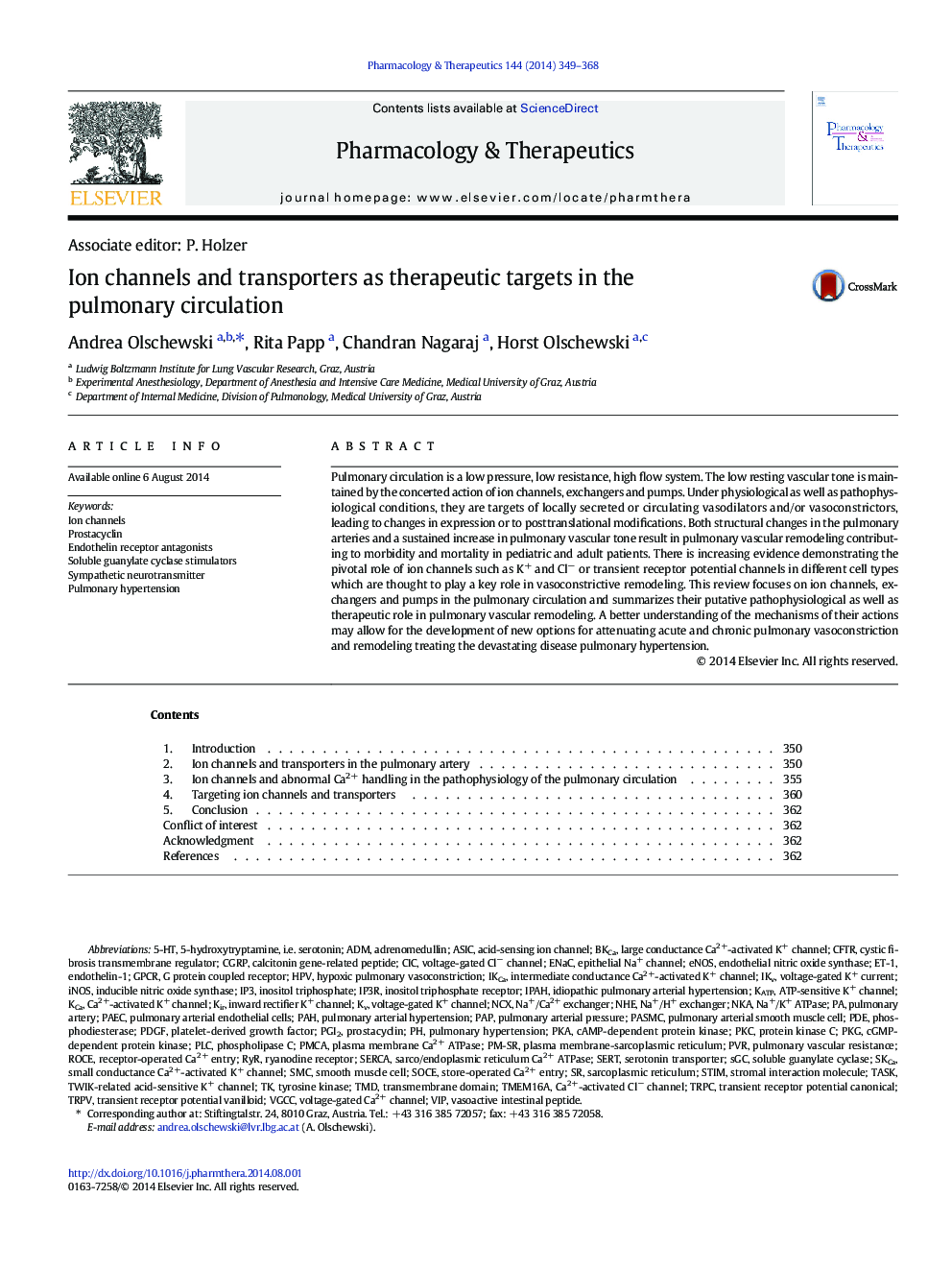| Article ID | Journal | Published Year | Pages | File Type |
|---|---|---|---|---|
| 2563713 | Pharmacology & Therapeutics | 2014 | 20 Pages |
Pulmonary circulation is a low pressure, low resistance, high flow system. The low resting vascular tone is maintained by the concerted action of ion channels, exchangers and pumps. Under physiological as well as pathophysiological conditions, they are targets of locally secreted or circulating vasodilators and/or vasoconstrictors, leading to changes in expression or to posttranslational modifications. Both structural changes in the pulmonary arteries and a sustained increase in pulmonary vascular tone result in pulmonary vascular remodeling contributing to morbidity and mortality in pediatric and adult patients. There is increasing evidence demonstrating the pivotal role of ion channels such as K+ and Cl− or transient receptor potential channels in different cell types which are thought to play a key role in vasoconstrictive remodeling. This review focuses on ion channels, exchangers and pumps in the pulmonary circulation and summarizes their putative pathophysiological as well as therapeutic role in pulmonary vascular remodeling. A better understanding of the mechanisms of their actions may allow for the development of new options for attenuating acute and chronic pulmonary vasoconstriction and remodeling treating the devastating disease pulmonary hypertension.
